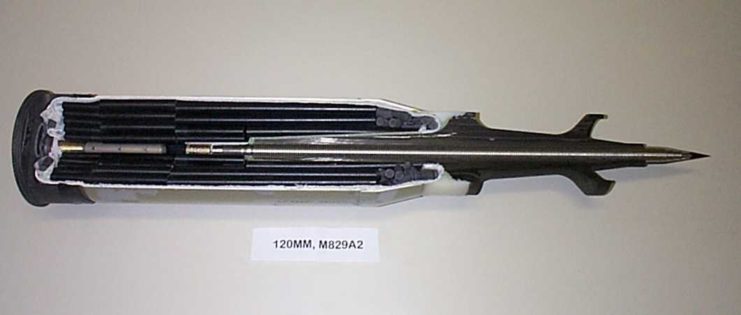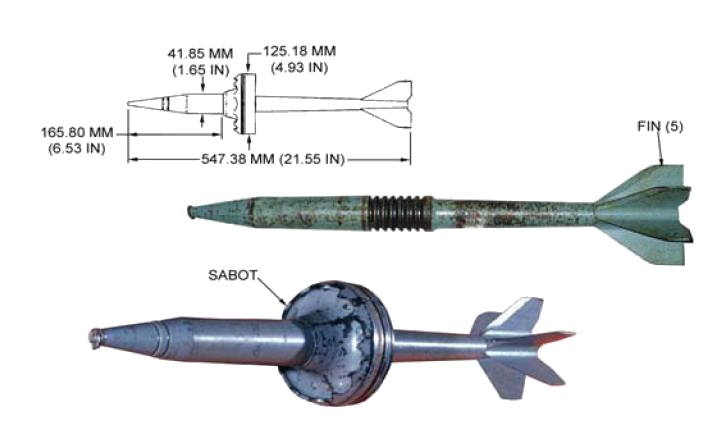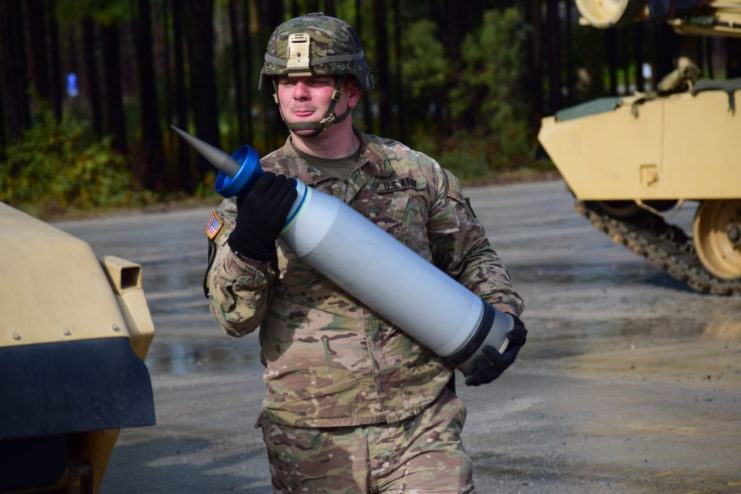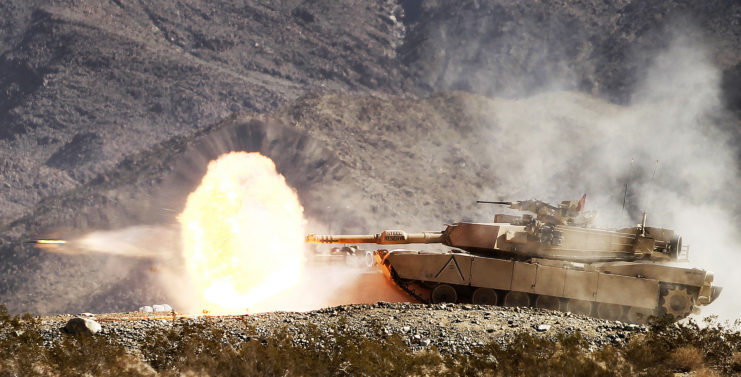The sabot round is a type of ammunition used by tanks in armored warfare. A non-explosive, anti-tank round encases a projectile, enabling it to hit its target with precision and devastating force. Once it strikes, the chances of survival for the opposing tank crew are slim to none, which is why the sabot round is highly favored in combat.
Inner workings of the Sabot round

The sabot round is designed to fill the gap between a sub-caliber projectile and the tank’s barrel, allowing the propellant gases to act on a larger surface area, rather than just the projectile itself. This helps the round achieve high muzzle velocity, even though the aerodynamics don’t always align smoothly with the interior ballistic structure.
As the sabot encases the projectile, it stabilizes it during passage through the barrel. Once the projectile exits the muzzle, the sabot separates, leaving the projectile to travel toward its target – often at speeds reaching 3,500 MPH.
The projectile is typically a depleted uranium rod designed to penetrate armor. Upon impact, it shatters into a spray of metal fragments. Its force is so devastating that one soldier described it as “liquefying” everything and everyone inside the tank or armored vehicle it hits.
Different types of sabot rounds

There are five different types of sabot rounds. The cup sabot supports the base of the projectile and offers structural support around the shaft. It’s typically used in small arms ammunition, as well as smoothbore shotgun and muzzleloader projectiles.
The expanding cup sabot is similar to the cup round, in that it’s used for rifled small arms. However, when fired, the centrifugal force from the rotation of the projectile causes the segments surrounding it to open up. This introduces more surface area to the surrounding air pressure, releasing it.
The base sabot has a one-piece base that supports the bottom of the projectile, as well as separate pieces that surround the sides and center, breaking away once the round has been fired. This sabot is considered superior to the previous two, as it offers a cleaner and better sabot-projectile separation. However, it’s more expensive to produce.
The spindle sabot is typically used in large caliber armor-piercing ammunition. It uses between two and four longitudinal rings with a center section that makes contact with the projectile. The front centers the projectile in the barrel and provides an air scoop to help with its separation from the sabot, while the rear seals the propellant gases with an obturator ring along the outside diameter.
Finally, the ring sabot uses the projectile’s rear fins to center it, forming a single ring around the front with an obturator ring to seal the gases. This type of sabot was favored by the Soviet Union, as the steel from which it was constructed could withstand launch accelerations without needing a ramp to support the projectiles.
Multiple generations of sabot round munitions

The M829A1, known as the “Silver Bullet,” is an armor-piercing fin-stabilized discarding sabot (APFSDS) round. It has a long-rod, uranium-depleted projectile that’s about 1.25 inches wide. Once it hits its target, it punches through armor and typically explodes an enemy tank in what tankers call a “jack in the box” effect.
According to Sofrep, the M829A1 “is widely regarded as the most effective tank-fired (M1 Abrams 120mm main gun) anti-armor weapons in the world. It overwhelmed Iraqi armor during Operation Desert Storm. The M829A1 is a depleted-uranium long-rod kinetic energy penetrator round capable of defeating heavily armored vehicles.”
Since then, multiple generations of the round have been developed. The M829A2 improved the structural quality of the uranium-depleted projectile, while the M829A3 made the propellant more efficient to boost muzzle velocity. The M829A4 uses a uranium-depleted projectile with a three-petal composite sabot.
Use during Operation Desert Storm

More from us: 5.56 vs 7.62: Which is the Better Long Distance Round?
Want to become a trivia master? Sign up for our War History Fact of the Day newsletter!
The M1A2 Abrams tank was used throughout Operation Desert Storm and fired 120 mm M829 sabot rounds at enemy armored vehicles; the projectiles took out multiple tanks as they dominated the battlefield. M829 sabot rounds are best used in armored warfare, rather than toward buildings or walls, so were thoroughly employed by the US military throughout the Gulf War.
